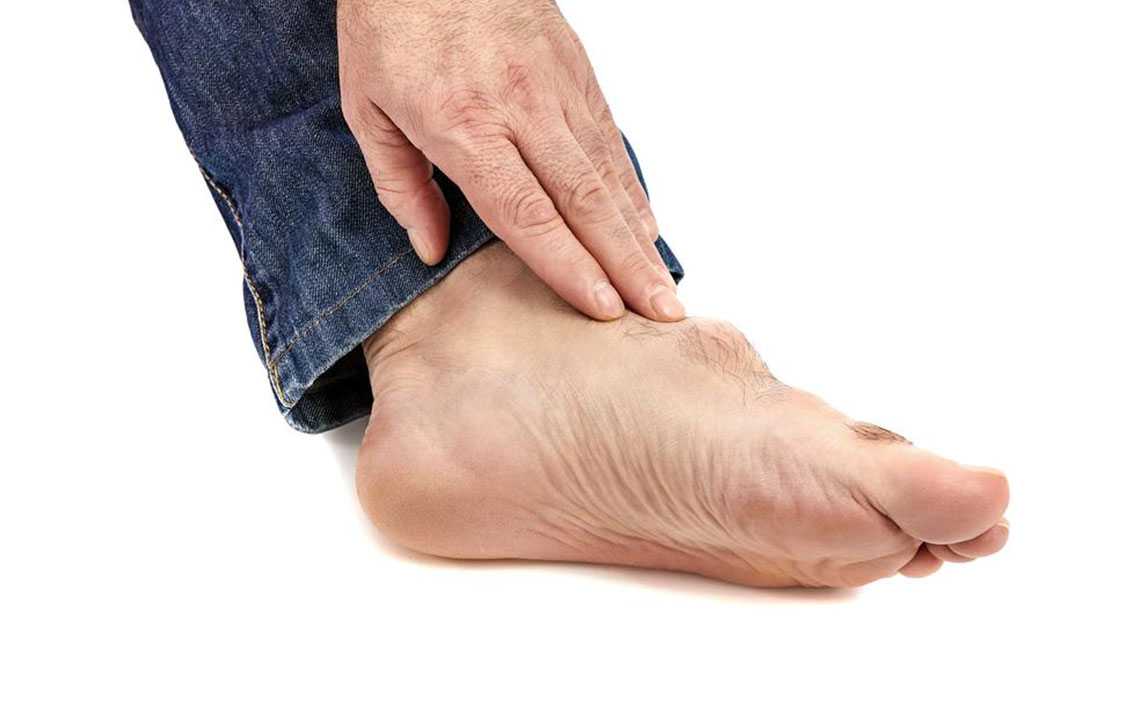Gout – Causes, Symptoms, Treatment, and Diet Plans

Inflamed joints are a painful condition. Joint pain due to arthritic conditions like gout is one of the leading cause of pain worldwide. Gout is a type of inflammatory arthritis that is characterized by the accumulation of uric acid crystals around the joints. The course of gout is recurrent with attacks of inflammation, followed by pain that starts a few hours later. The pain is often severe and of rapid onset.
Gout is caused by various genetic and environmental factors. Gout occurs when there is a high level of uric acid in the blood. Uric acid forms crystals and these uric acid crystals deposit around bone joints, tendons, and supportive tissues.
Gout was once called “the rich man’s disease” or “the king’s disease” since it was associated with excessively rich diets. With modern diets and prolonged life spans, gout has become increasingly common. Being overweight, eating too much meat, and drinking too much beer increases your chances of developing gout. Gout diet plans aim to ease the symptoms and reduce the frequency of attacks.
Causes of gout
The primary cause of gout is uric acid buildup. In most cases, the underlying reason for overaccumulation of uric acid is underexcretion of urate by the kidneys. Though uncommon, sometimes the reason could be an overproduction of uric acid.
Genetic and dietary factors play a huge role in the development of gout. Diets with excessive amounts of meat, seafood, alcohol, and sweetened beverages, increase the risk of developing gout.
Gout diet plans include consuming vitamin C, dairy products, and coffee along with moderate levels of physical exercise.
Symptoms to watch out for
The most defining symptom of gout is recurrent attacks of acute arthritis. The joints become red, inflamed, tender, hot to the touch, and even painful. In half of all cases, the joint of the big toe is affected. The heels, knees, wrists, elbows, and fingers are also commonly affected.
These attacks usually begin at night. The onset of the inflammation is followed by the pain in about 2 to 4 hours. Accompanying symptoms such as high fever, fatigue, and headaches can also occur.
Chronic high levels of uric acid in the blood can also cause painless deposits around the joints called tophi. These deposits can cause bone erosion over time leading to chronic arthritis. High levels of uric acid can also lead to kidney stones and nephropathy. Gout is more prevalent in older populations, especially in older men.
Treatment of gout
Proper treatment of gout includes medication and diet plans. Medications for gout aim to reduce the swelling and inflammation, as well reduce the blood uric acid levels. Steroids, as well as non-steroidal anti-inflammatory drugs (NSAIDs), can be used to reduce joint inflammation. NSAIDs like ibuprofen are taken during acute attacks to reduce redness and swelling, as well as managing the pain.
Steroids like prednisolone can be taken by orally or injected directly into affected joints to reduce the inflammation. They can also be given IV in severe cases. These medications take up to 24 hours to provide relief.
Medications that reduce or control uric acid levels are used to prevent gout attacks and halt the development of a chronic condition. These medications are taken only after a current attack is over since taking them during an ongoing attack can make it worse. Medications like allopurinol and febuxostat are commonly prescribed. These work by dissolving and dislodging uric acid deposits that are already formed. This could be a painful process and may trigger another attack; however, it is important to stick to the treatment regimen since it has long-term benefits.
Eat fit: Gout diet plans
Good gout diet plans include plenty of fruits and vegetables, along with whole grains, low-fat food, and plenty of fluids. It is not advisable to eat animal products like poultry, red meat, and seafood. Reduce or avoid the intake of foods like high fructose corn syrup, sweetened drinks, processed carbohydrates, and yeast. Gout diet plans also have a fixed regime to eliminate any food high in purines. Purines are chemical compounds that get converted to uric acid in the body.
Foods high in purines are shellfish, red meat, fructose, and vegetables such as asparagus, beans, mushrooms, cauliflower, and spinach. Offal and glandular meats like liver are also high in purines and have to be avoided. Particular kinds of seafood are quite high in purines such as mackerel, tuna, shrimp, lobster, and mussels.
Overall, intake of animal protein should be limited to 4 to 6 ounces per day. Certain foods that have moderate amounts of purines can be tolerated such as bacon, mutton, salmon, and turkey.
Drinking plenty of water is an important part of the gout diet plan. Alcohol and sweetened beverages, have to be avoided.
Include legumes, low-fat dairy, whole grains, vitamin C, fruits, and vegetables in your diet.
Gout diet plans are not a means of treatment. They are lifestyle changes that help to manage the painful condition and reduce its severity.
Other lifestyle changes like getting adequate exercise and losing weight can also help. A combination of medication and healthy diet plans is the best way to tackle gout.


